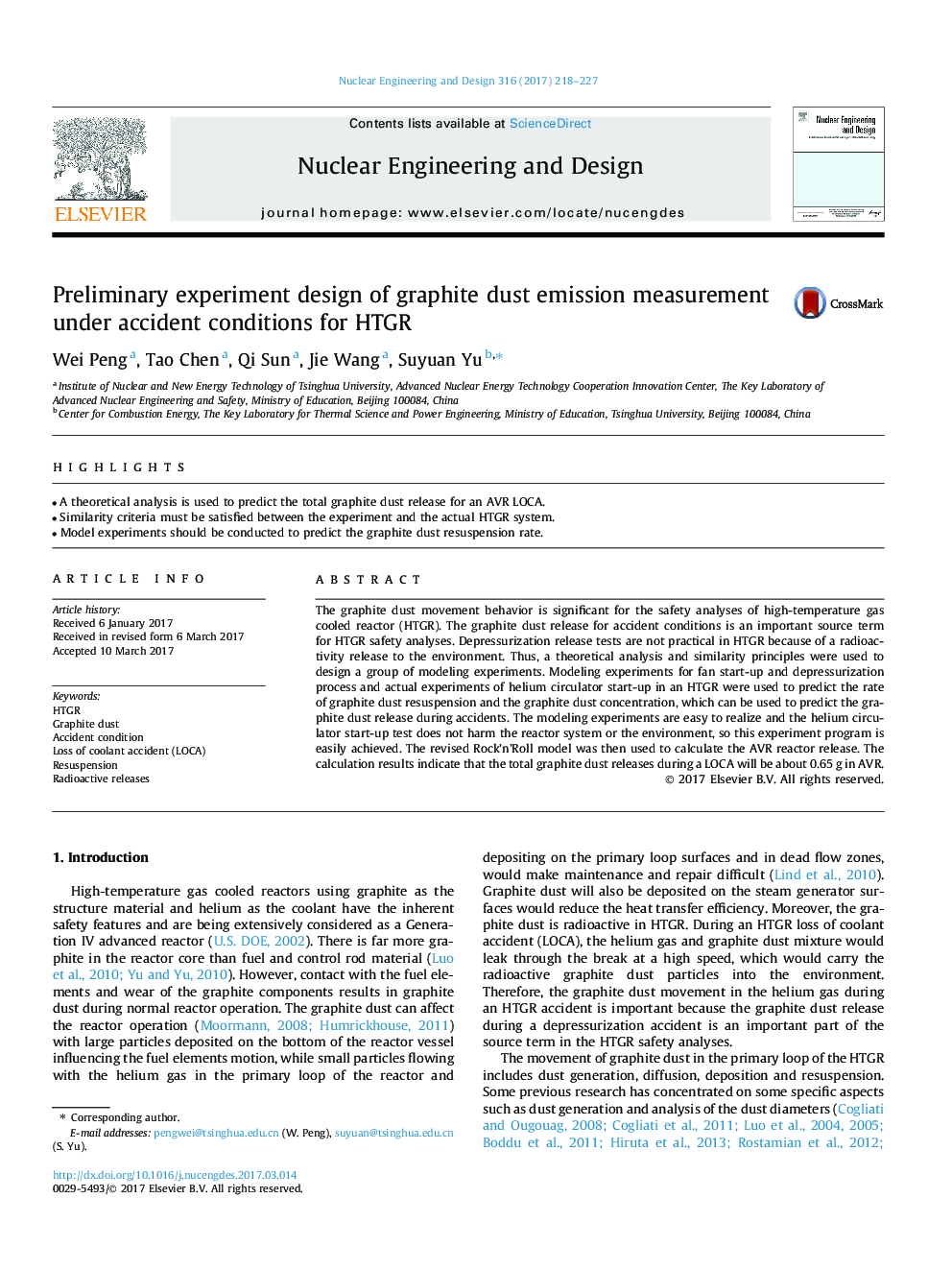| Article ID | Journal | Published Year | Pages | File Type |
|---|---|---|---|---|
| 4925676 | Nuclear Engineering and Design | 2017 | 10 Pages |
Abstract
The graphite dust movement behavior is significant for the safety analyses of high-temperature gas cooled reactor (HTGR). The graphite dust release for accident conditions is an important source term for HTGR safety analyses. Depressurization release tests are not practical in HTGR because of a radioactivity release to the environment. Thus, a theoretical analysis and similarity principles were used to design a group of modeling experiments. Modeling experiments for fan start-up and depressurization process and actual experiments of helium circulator start-up in an HTGR were used to predict the rate of graphite dust resuspension and the graphite dust concentration, which can be used to predict the graphite dust release during accidents. The modeling experiments are easy to realize and the helium circulator start-up test does not harm the reactor system or the environment, so this experiment program is easily achieved. The revised Rock'n'Roll model was then used to calculate the AVR reactor release. The calculation results indicate that the total graphite dust releases during a LOCA will be about 0.65Â g in AVR.
Related Topics
Physical Sciences and Engineering
Energy
Energy Engineering and Power Technology
Authors
Wei Peng, Tao Chen, Qi Sun, Jie Wang, Suyuan Yu,
